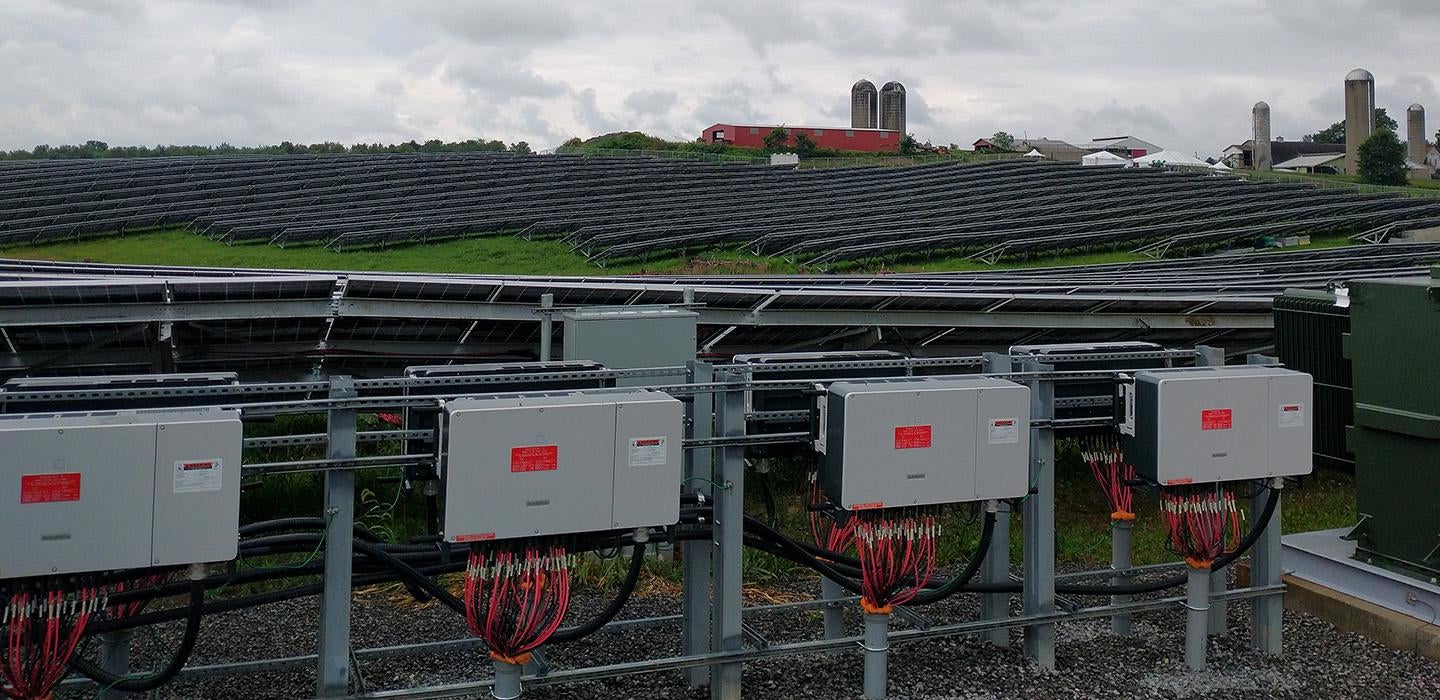
Subscribe to Pittwire Today
Get the most interesting and important stories from the University of Pittsburgh.A cool breeze cuts through the hot and humid Pittsburgh air as it travels across the rolling hills. If you stop to listen for a moment, you’ll hear 55,000 solar panels gently humming between bird songs and insect chirps. The Gaucho Solar farm is online.
Groups from the University of Pittsburgh, Vesper Energy, local and state representatives, and local landowners have gathered to cut the ribbon on the largest solar power project in Southwestern Pennsylvania, which spans 68 acres on the border of Findlay Township in Allegheny County and Independence Township in Beaver County near the Pittsburgh International Airport.
Born from a partnership between the University of Pittsburgh and Vesper Energy, the solar farm is a landmark accomplishment for renewable energy in the region. “Partnership with the University of Pittsburgh was a powerful one from the very beginning,” said Craig Carson, Vesper Energy’s president and CEO. “Our teams were aligned with shared goals and a mission to create a more sustainable future through better energy infrastructure.”
Through a power purchase agreement, Pitt secured 100% of the farm’s energy and environmental attributes for 20 years. Gaucho Solar will produce 35,700 megawatt-hours of electricity annually, which will power 18% of Pitt’s urban Pittsburgh campus. Despite overcast weather on the day of the ribbon-cutting, the Gaucho Solar array was still close to producing at capacity. By purchasing renewable electricity from Vesper, the University will avoid 15,452 metric tons of greenhouse gas emissions each year — the equivalent of removing 3,330 gasoline-fueled cars from the road.
“Our partnership with Vesper on the Gaucho Solar array demonstrates Pitt’s commitment to not just purchasing renewable electricity, but purchasing local renewable electricity,” said Aurora Sharrard, Pitt’s executive director of sustainability. “Our carbon neutrality strategy reaches towards environmental solutions while balancing and addressing our academic mission, pursuing equitable outcomes, and helping create economic resilience for our University and communities.”
In addition to providing Pitt with renewable energy, students will have the opportunity to enhance their education by visiting the site and using an adjacent observation area. Native flora was also planted across the solar farm to enhance biodiversity and provide essential habitats for critical pollinator species.
[Check in on the Pitt Sustainability Plan’s progress.]
The activation of Gaucho Solar farm is a big step toward the University’s goal of achieving carbon neutrality by 2037 — the 250th anniversary of Pitt’s founding. The road map for this achievement is detailed in the Pitt Climate Action Plan and includes other renewable energy projects, such as the expansion of rooftop solar arrays across all Pitt campuses and a purchase agreement with a future run-of-the-river hydropower plant on the Allegheny River.
From reducing energy usage across its 140-plus campus buildings to elevating the already high standards of building performance for all new construction, the University is tackling energy from all angles. “Reducing energy demand and cleaning our energy supply are both something we focus on daily,” said Scott Bernotas, Pitt’s vice chancellor of facilities management.
Sharrard said she is proud to have played a critical role in bringing the second-largest solar farm in Western Pennsylvania to fruition, but hopes this is just the next stop for renewable energy utilization in the region: “We’re excited for other organizations and homeowners to follow our lead, joining the other 40,000-plus rooftop and utility-scale solar installations across Pennsylvania in using the sun to power our places and fuel our inspiration.”
— Story and photography by Melanie Lippert


